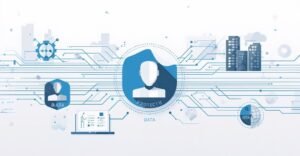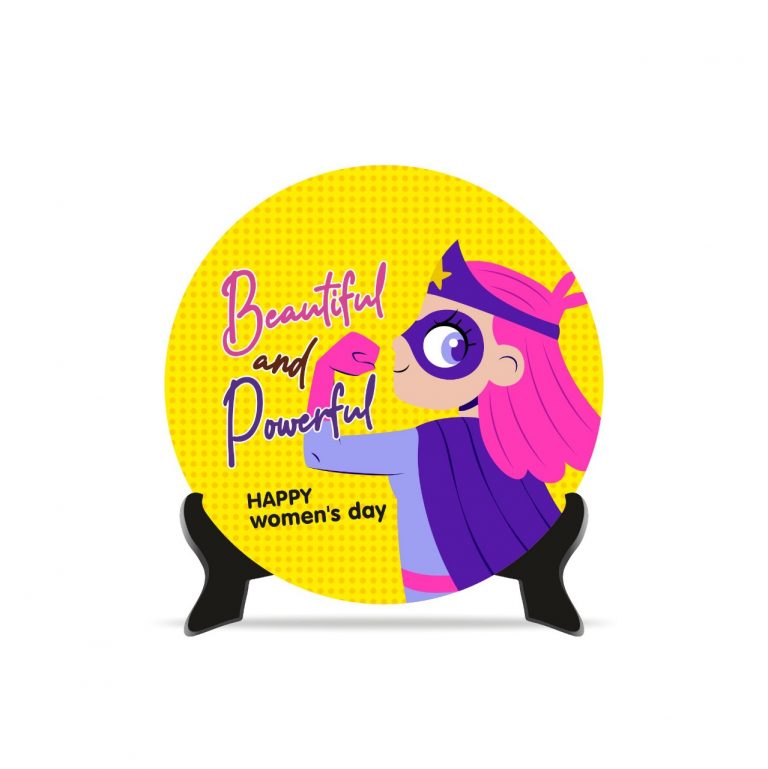The best candidates are off the market in ten days or less. When your application process takes weeks to review resumes and schedule interviews, you lose top talent to faster competitors. AI-powered recruitment tools like CloudApper AI Recruiter solve this problem by instantly screening and ranking resumes in seconds, automating interview scheduling, and maintaining 24/7 communication with candidates. This keeps applicants engaged, reduces drop-off rates by up to 70%, and helps you hire better people faster.
Why Are Your Best Candidates Disappearing?
Imagine applying for your dream job. You spend an hour crafting the perfect resume and cover letter. You hit submit and then… silence. Days pass. Then weeks. Meanwhile, another company responds within hours, schedules an interview for the next day, and makes you an offer by the end of the week. Which job do you take?
This scenario plays out thousands of times every day across industries. Companies with slow hiring processes consistently lose their best candidates to competitors who move faster. The data tells a clear story: top candidates receive multiple offers and typically accept positions within ten days of starting their job search.
The problem isn’t that your company doesn’t want to move quickly. The issue is that traditional recruitment processes are built on manual tasks that simply take time. Someone has to read every resume, compare qualifications, coordinate schedules, and send follow-up emails. Even with a dedicated HR team, this process takes days or weeks. During that waiting period, candidates feel ignored and continue interviewing with other companies.
What Causes Candidates Drop-Off During the Application Process?
Candidate drop-off happens when applicants start your hiring process but abandon it before completion. Research shows that drop-off rates increase dramatically at specific points in the recruitment journey.
The first critical moment is immediately after application submission. When candidates don’t receive acknowledgement within twenty-four hours, many assume their application was lost or ignored. They stop checking their email for updates from your company and focus on employers who respond quickly.
The second danger zone occurs during the resume screening phase. Traditional screening takes anywhere from three days to three weeks, depending on application volume. During this silent period, candidates feel anxious and undervalued. They interpret the silence as disinterest and move on to other opportunities.
The third common drop-off point happens during interview scheduling. The back-and-forth emails trying to find a mutually convenient time frustrate both candidates and hiring managers. After several failed attempts to align schedules, candidates often ghost the process entirely or accept offers from companies with smoother coordination.
Poor communication throughout the process amplifies all these issues. When candidates don’t know where they stand or what happens next, they lose confidence in your organization. They start viewing your slow, unclear hiring process as a preview of what working at your company might be like.
How Long Is Too Long to Process Job Applications?
Speed matters more in recruitment today than ever before. Studies consistently show that candidates who receive responses within the first twenty-four hours are three times more likely to complete the application process than those who wait longer.
The absolute maximum time you should take to acknowledge an application is twenty-four hours. Ideally, acknowledgment should happen within one hour of submission. This immediate response shows respect for the candidate’s time and interest.
Resume screening should be completed within forty-eight hours for priority positions. Even for less urgent roles, screening shouldn’t exceed five business days. Remember that every day you take to screen resumes is another day your top candidates are interviewing elsewhere.
The entire process from application to offer should take no more than two weeks for most positions. Some companies have compressed this to just seven days with impressive results. The faster you move, the better talent you attract and retain throughout the process.
Can Artificial Intelligence Really Screen Resumes Accurately?
Modern AI recruitment tools use natural language processing and machine learning to understand resumes in ways that rival or exceed human screeners. Early resume screening software relied on simple keyword matching, but today’s platforms are far more sophisticated.
CloudApper AI Recruiter uses advanced algorithms that understand context, synonyms, and industry-specific language. The system recognizes that “customer service” and “client relations” refer to similar skills. It understands that a “Senior Marketing Manager” and “Marketing Director” might have comparable experience levels.
The platform evaluates multiple factors simultaneously including work experience, education, skills, certifications, career progression, and writing quality. It compares each candidate against your specific job requirements and scores them on a consistent scale. The system learns from your hiring decisions over time, becoming more accurate with each position you fill.
This AI-powered approach eliminates unconscious bias that affects human screeners. The system evaluates every candidate using the same criteria, regardless of name, age, gender, or other demographic factors that shouldn’t influence hiring decisions but often do subconsciously.
How Does Automated Interview Scheduling Actually Work?
Interview scheduling traditionally involves tedious email chains between recruiters, candidates, and hiring managers. This process takes days and frustrates everyone involved.
CloudApper AI Recruiter automates this entire process through conversational AI that interacts with candidates naturally. After a candidate passes initial screening, the system immediately engages them through their preferred communication channe, email, text message, or chat interface.
The AI asks candidates about their availability in natural language: “Great news! We’d like to schedule an interview. What days and times work best for you this week?” Candidates respond conversationally without needing to learn any special systems or formats.
Behind the scenes, CloudApper AI Recruiter checks hiring manager calendars, identifies overlapping availability, and proposes specific interview times to candidates. Once a time is confirmed, the system automatically sends calendar invitations, interview details, and any preparation materials candidates need.
The 24/7 availability of AI scheduling means candidates can book interviews at midnight if that’s when they check their messages. They don’t have to wait for business hours or worry about time zone differences. This convenience dramatically improves the candidate experience and keeps people engaged in your process.
Related Posts
How Do You Keep Candidates Engaged Between Interview Rounds?
The waiting period between interview rounds is a critical moment when candidate interest either builds or evaporates. Companies that maintain regular communication during these gaps keep candidates excited and committed to the opportunity.
CloudApper AI Recruiter sends automated status updates at predetermined intervals. After a first interview, the system might send a message like: “Thank you for meeting with us yesterday. We’re reviewing feedback from your interview and will update you by Friday about next steps.”
These updates don’t require any manual effort from recruiters, yet they provide the transparency candidates crave. The platform can also share engaging content during waiting periods like videos about company culture, employee testimonials, or information about the team they’d be joining.
Does AI Recruitment Really Improve Hiring Outcomes?
Companies implementing AI-powered recruitment platforms report significant improvements across multiple metrics that matter. Time-to-hire decreases by an average of sixty percent when AI handles resume screening and scheduling automation. Positions that previously took thirty days to fill now close in twelve days.
Candidate drop-off rates fall by fifty to seventy percent when communication becomes instant and consistent. Applicants who receive immediate responses and clear timelines stay engaged throughout the process. They view your company as organized, respectful, and desirable to work for.
Quality of hire improves because AI screening identifies qualified candidates who might slip through traditional processes. The consistent evaluation criteria ensure you’re comparing candidates fairly and selecting based on qualifications rather than unconscious bias.
Recruiter productivity increases dramatically when AI handles routine tasks. HR professionals can focus on high-value activities like building relationships with top candidates, strategizing with hiring managers, and improving overall recruitment processes.
CloudApper AI Recruiter delivers these benefits through a platform designed specifically for the challenges modern recruitment teams face. The system integrates with existing applicant tracking systems, works across multiple communication channels, and requires minimal training for HR teams to implement effectively.
Frequently Asked Questions
What’s the biggest mistake companies make in candidate communication? The most damaging mistake is going silent after candidates submit applications or complete interviews. Even negative news delivered promptly is better than leaving people wondering about their status. CloudApper AI Recruiter solves this by automating status updates at every stage of the hiring process.
How quickly should you acknowledge job applications? Applications should be acknowledged within one hour of submission, and certainly within twenty-four hours. Immediate acknowledgment dramatically increases the likelihood that candidates will stay engaged throughout your hiring process.
Can AI really understand what makes a good candidate? Modern AI recruitment platforms analyze hundreds of factors simultaneously and learn from your actual hiring decisions. They become increasingly accurate at identifying candidates who match your specific needs and company culture.
Won’t candidates feel put off by talking to an AI instead of a human? Research shows candidates care more about speed and clarity than whether they’re communicating with AI or humans. When AI provides instant responses and clear information, satisfaction scores actually increase compared to slow human-driven processes.
Transform Your Recruitment Process Today
Candidate drop-off is not an inevitable part of hiring. It’s a symptom of outdated processes that fail to meet modern expectations for speed and communication. The best candidates move fast, make decisions quickly, and expect employers to match their pace.
The recruitment landscape has fundamentally changed. Job seekers today experience instant responses in nearly every aspect of their digital lives—from ordering food to booking travel to getting customer support. They naturally expect the same speed and responsiveness when applying for jobs. Companies that cling to manual screening processes and slow communication cycles will continue losing their best candidates to more agile competitors.
Artificial intelligence has matured to the point where it can genuinely enhance the human elements of recruitment rather than replace them. By handling repetitive tasks like initial resume screening, schedule coordination, and status updates, AI frees HR professionals to focus on what humans do best: building relationships, assessing cultural fit, and making nuanced hiring decisions.
Organizations exploring AI recruitment solutions should evaluate platforms based on their ability to integrate seamlessly with existing systems, maintain natural conversational interactions with candidates, and learn from company-specific hiring patterns. Solutions like CloudApper’s conversational AI recruiter demonstrate how technology can compress time-to-hire while actually improving the candidate experience through consistent, personalized communication.
The question facing HR leaders isn’t whether to adopt recruitment AI – it’s how quickly they can implement it before the gap between their hiring speed and candidate expectations becomes too wide to bridge. Every week of delay represents talented people you’ll never meet because they’ve already accepted offers from faster-moving organizations.
Start by identifying your biggest recruitment bottlenecks. Is resume screening taking too long? Is interview scheduling creating frustrating delays? Are candidates dropping out because they don’t hear back quickly enough? Once you’ve diagnosed the problem areas, you can evaluate which AI tools address your specific challenges most effectively.
The future of recruitment has arrived, and it moves at the speed of conversation – instant, responsive, and always available. Your next great hire is out there right now, probably applying to multiple companies. The one that responds first, communicates clearly, and makes the process effortless will win.










